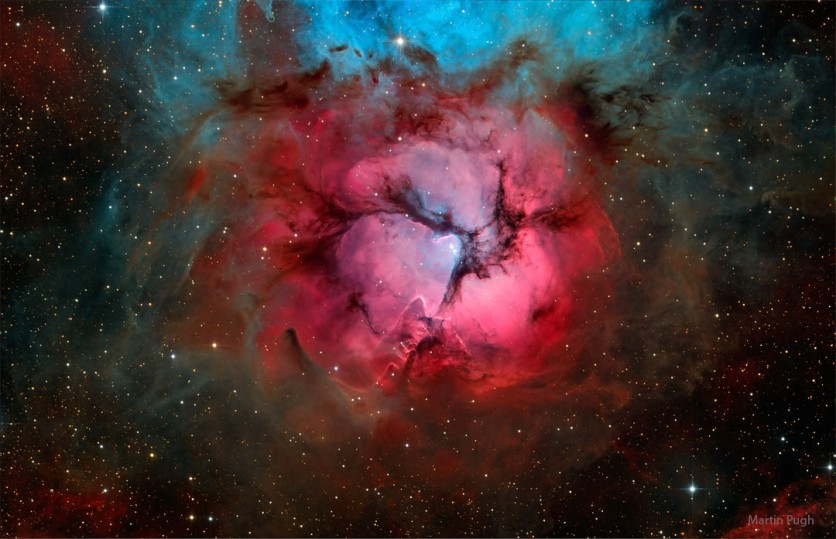In a remarkable display of cosmic beauty, NASA has revealed the awe-inspiring Trifid Nebula, a vibrant region where new stars are born.
This celestial masterpiece showcases a convergence of three distinct dust lanes, from which the Trifid Nebula derives its name.
Within this stellar nursery, an intricate interplay of light and darkness unfolds, captivating the imagination of astronomers and stargazers alike.

Cosmic Tapestry
The Trifid Nebula, designated as M20, exhibits mesmerizing features that have captured the attention of scientists.
Near the lower region are striking mountains of opaque dust tower over the scene, adding an element of grandeur. Intertwined throughout the nebula are slender threads of dark filaments, enhancing the nebula's ethereal beauty.
At the heart of this cosmic tapestry, a solitary massive star radiates its luminosity, illuminating the surrounding celestial canvas with its brilliance.
One of the remarkable aspects of the Trifid Nebula is its youthful age. NASA estimates that this star-forming region is a mere 300,000 years old, making it one of the youngest emission nebulas known to humanity.
Located approximately 9,000 light-years away in the direction of the Archer constellation, or Sagittarius, this celestial wonder spans an impressive expanse of approximately 20 light years.
The captivating image, captured by astrophotographer Martin Pugh, unveils the breathtaking beauty of the Trifid Nebula in remarkable detail. It serves as a portal into the mesmerizing universe, inviting us to explore its secrets and contemplate the mysteries of our vast cosmos.
Read Also : NASA's Webb Spots Massive Plume from Saturn Moon Spanning Nearly the Distance from LA to Buenos Aires
Celestial Laboratory
This cosmic marvel has provided scientists with valuable insights into the star formation process. The Trifid Nebula serves as a celestial laboratory, where the intricate dance of gravity, interstellar gas, and dust gives birth to new stars.
By studying such star-forming regions, astronomers can deepen their understanding of the mechanisms that shape galaxies and contribute to forming stellar systems.
The release of this captivating image by NASA highlights the organization's ongoing commitment to unraveling the mysteries of the universe. With each new discovery and revelation, scientists and enthusiasts alike are reminded of the endless wonders that lie beyond our Earthly realm.
The Trifid Nebula serves as a testament to the vastness and beauty of the cosmos, inspiring a sense of awe and curiosity that fuels our collective exploration of the unknown.
As we gaze upon the Trifid Nebula, we are reminded of our place in the grand tapestry of the universe. Its ethereal splendor beckons us to ponder the mysteries of creation and the infinite possibilities that await us in the depths of space.
With every new image and revelation, NASA continues to ignite our imagination and expand our horizons, propelling us closer to unlocking the secrets of the cosmos.
Related Article : NASA's Hubble Space Telescope Captures 'Butterfly Nebula' In Stunning Motion | Fun Facts About This Beautiful Space Butterfly

ⓒ 2026 TECHTIMES.com All rights reserved. Do not reproduce without permission.




